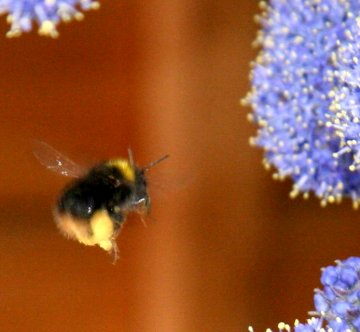 There’s a buzz in the world of honeybees. Well, actually, there isn’t a buzz, and that’s the problem, there have been reports across the globe of colony collapse disorder. In Colony Collapse Disorder (CCD) a hive fails to thrive but the beekeepers don’t find the carcasses of their yellow and black striped friends. Given that countless of our essential food crops and some of our luxury foods rely on honeybees for pollination, scientists, beekeepers, and farmers alike are keen to find out what is causing this problem. However, the cause of CCD (Aristotle described contagious brood disease as a “wildness” in bee colonies), has proven an elusive beast.
There’s a buzz in the world of honeybees. Well, actually, there isn’t a buzz, and that’s the problem, there have been reports across the globe of colony collapse disorder. In Colony Collapse Disorder (CCD) a hive fails to thrive but the beekeepers don’t find the carcasses of their yellow and black striped friends. Given that countless of our essential food crops and some of our luxury foods rely on honeybees for pollination, scientists, beekeepers, and farmers alike are keen to find out what is causing this problem. However, the cause of CCD (Aristotle described contagious brood disease as a “wildness” in bee colonies), has proven an elusive beast.
A new review from the bee research labs at the United States Department of Agriculture, in Beltsville, Maryland, points out that there is as yet no known cause and that, despite activist pressure, it is not necessarily the fault of modern pesticides. This is what the USDA has to say in the review:
A new review would suggest that colony collapse (which was mentioned by Aristotle!) is most certainly a multifactor issue:
“Current hypotheses for CCD focus on the adverse effects of pesticides and other anthropogenic chemicals, poor nutrition, and exposure to novel pathogenic microbes. After initial successes at identifying unusual viral profiles in some CCD colonies, a consensus is emerging that CCD is complex and probably cannot be ascribed to any one agent…Instead, honey bee colonies appear to be resilient to most individual insults, but are vulnerable to the cumulative effects of microbes and other stress factors.”
![]() Evans, J., & Schwarz, R. (2011). Bees brought to their knees: microbes affecting honey bee health Trends in Microbiology DOI: 10.1016/j.tim.2011.09.003
Evans, J., & Schwarz, R. (2011). Bees brought to their knees: microbes affecting honey bee health Trends in Microbiology DOI: 10.1016/j.tim.2011.09.003